|
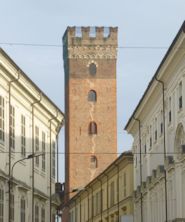 Dwight Peck's personal website Dwight Peck's personal website
Two weeks in Piemonte and Tuscany
in northwest Italy's worst weather in yonks
You may not find this terribly rewarding unless you're included here, so this is a good time for casual and random browsers to turn back before they get too caught up in the sweep and majesty of the proceedings and can't let go.
We wanted to visit Lucca and environs, but when we decided to break up the drive with a night spent halfway in each direction, one thing led to another.
So here we are for . . .
An afternoon in Asti

Vast farms of solar panels along the SR10 road from Alessandria towards Asti, about 35km to the west. We've driven down from Lu through Quargnento (a name to conjure with) to join the SR10 near Solaro.

From the central carpark in the Piazza Vittorio Alfieri (which, with the Piazza Campo del Palia, is the site of the famous annual festival of the palio, the bareback horseraces amongst teams from the city neighborhoods and surrounding communes), we're walking westward along the Corso Vittorio Alfieri.

The Torre Troyante clock tower (from 1260-1280)

First, in the Piazza San Secondo next to the Palazzo Civico or city hall, we're stopping in at the collegiate church and crypt of San Secondo, Asti's patron saint.
Saint Secondus was a wealthy local who is said to have been beheaded here in 119 by the unsympathetic Emperor Hadrian for his steadfast Christian allegiance. (Later legends professed him to have been part of the Theban Legion, the Christianized Egyptian garrison that was transferred north to confront Burgundian rebels, and after refusing orders to participate in the standard Emperor Worship whilst stationed in Agaunum, they and their commander (Saint Maurice) were executed in the first Diocletian persections in 286. He wasn't there, though.)
Agaunum, an influential monastery in the early Middle Ages, is now called St-Maurice, just down the street from us in Switzerland.

The Gothic portals from the 13th century
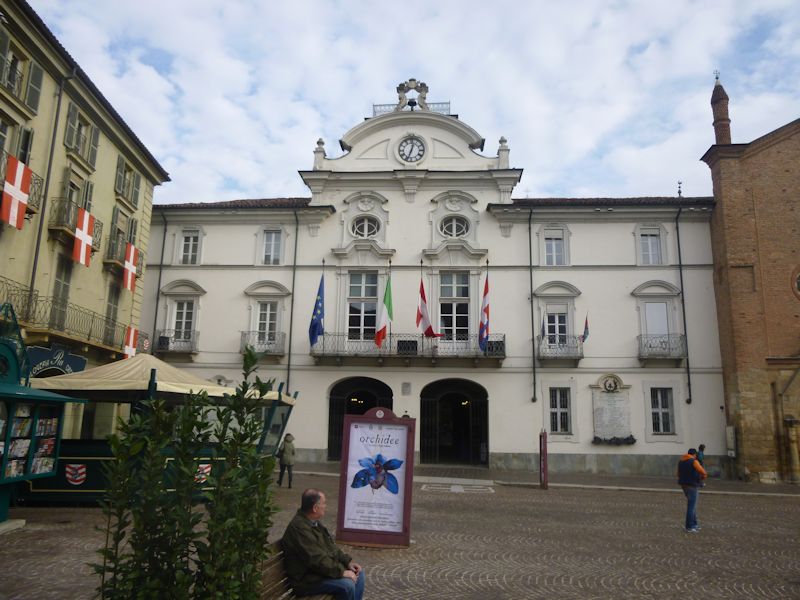
The city hall next door
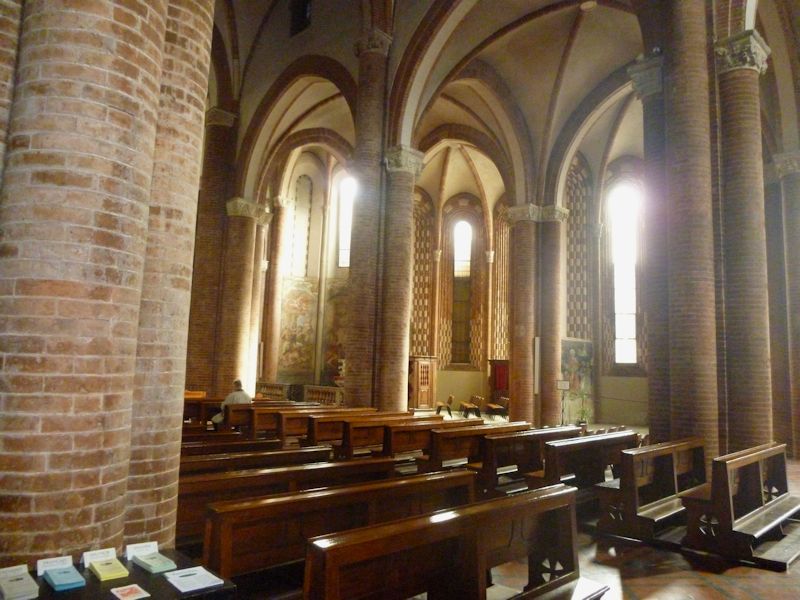
The centre aisle of the nave

Kristin and the left aisle


A side chapel with pietà

The apse

The fascination with beheadings -- presumably St Secundus being steadfast in the faith


The Virgin Mary's house on its way from the Holy Land to Loreto, flown over by angels to save it from the Heathen when in 1291 the Crusaders were finally being expelled from Palestine.

To the debate about whether God was a She or a He, this is probably a solid vote for the latter.

One more view of San Secondo

The Piazza San Secondo and municipio. The Romans defeated the Ligurian Satielli tribe and in 124 BC built a castrum or permanent military camp here, which subsequently graduated to a colonus and thence to a city in 49 BC. It flourished as a key strategic city for the Romans, central to the military road system around Turin and over the mountain passes to Gaul and what is now Switzerland.
That strategic importance, and its position on the flat land along the Tanaro tributary of the Po, made it prominent in almost everyone's military scheming. The emperor Honorius was trapped and besieged here by Alaric's Goths in 402, but saved when the famous Stilicho arrived just in time and sent the Goths packing at the Battle of Pollentia on the banks of the Tanaro about 40km upriver.

No menu left unstudied

We're back on the Corso Vittorio Alfieri main street, named for an 18th century poet and tragedian who was born here but traveled widely and lived in Paris, Florence, Rome, and elsewhere (but not here) and kept up a decades-long affair with Louise, the wife of Bonnie Prince Charlie.

The Piazza Roma and the 13th century Tower of the Comentini -- Asti was evidently known as the City of a Hundred Towers, and there were about 120 of them at one time, of which 12 are still standing and apparently only one can be visited. The crenellated building attached to the tower is from the late 19th century.

A monument to Unified Italy in the Piazza Roma
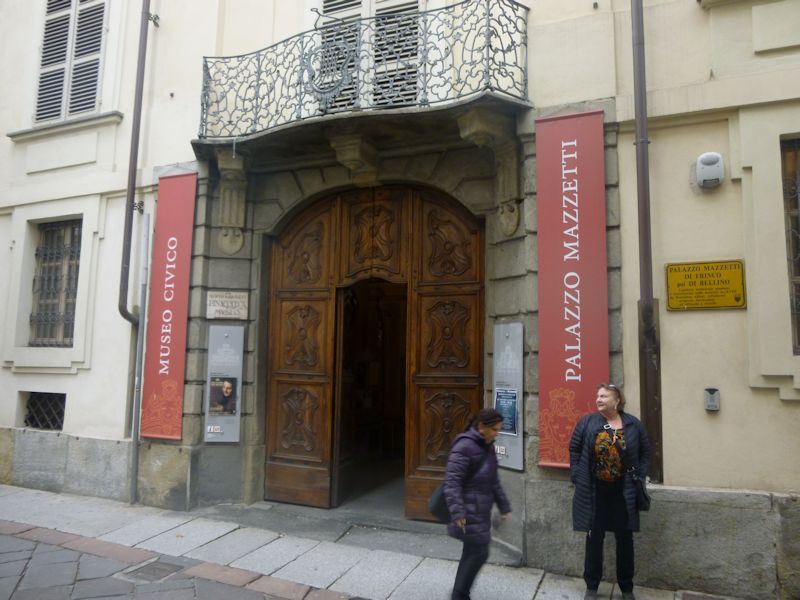
The beautiful Palazzo Mazzetti houses the city museum and pinacoteca -- not very many outstanding paintings ("No Photo!!"), but the palace itself is exceptional.

A look back at the Torre dei Comentina

The octagonal Gothic Tower of the Regibus, built by the important Ghibelline family Re, or De Regibus, in the 13th century.

The Torre de Regibus again. Asti served as a regional administrative centre under the Longobard regime of the 6th to 8th centures, and was then ruled by its Carolingian bishops through the 10th century, but was utterly trashed by the implacable Adelaide of Susa, Marchioness of Turin, in 1070, for impertinence, and by the emperor Friedrich Barbarossa in 1155. In the meantime, however, it had somehow become one of the first legally 'free communes' in Italy.

The towers don't stop coming.

More towers. That's the baroque church of Ste Catherine, still on the Corso Alfieri near the western city gate.

The Santuario di San Giuseppe on the Corso Alfieri, facing the Piazza Cairoli and King Umberto I with his funny hat. Built in 1931, it's dedicated to Saint Giuseppe Marello (1844-1895), a local fellow who became the Bishop of Acqui and founder of the Oblates of St Joseph Congregation and was known for his 'special devotion to the Virgin Mary' and for the miraculous healing some malnourished kids.

Ouch.

We'll surely have better luck at the Cathedral up the street.

There's Umberto I now, with his funny hat. King Umberto was assassinated by an anarchist in 1900, poor chap.

A plane tree planted in 1849 to mark the 100th anniversary of the birth of Vittorio Alfieri.

The mixed Romanesque and Gothic Cattedrale di Santa Maria Assunta -- we're going in the side door. The belltower is attested from 1266.

A beautiful antiporta on the southern side, mainly from the 15th century. The present cathedral here, replacing an earlier one that was destroyed in a sacking of the city in 1070, was consecrated by Pope Urban II as he stopped off on his way home from preaching the First Crusade at Clermont in France in 1095.

The nave with two side aisles

Terracotta scenery: the 'Complaint of the Dead Christ', from about 1500

A baptismal font from 1468

Another, with griffins, from 1229


Side chapel

The central aisle and rose window

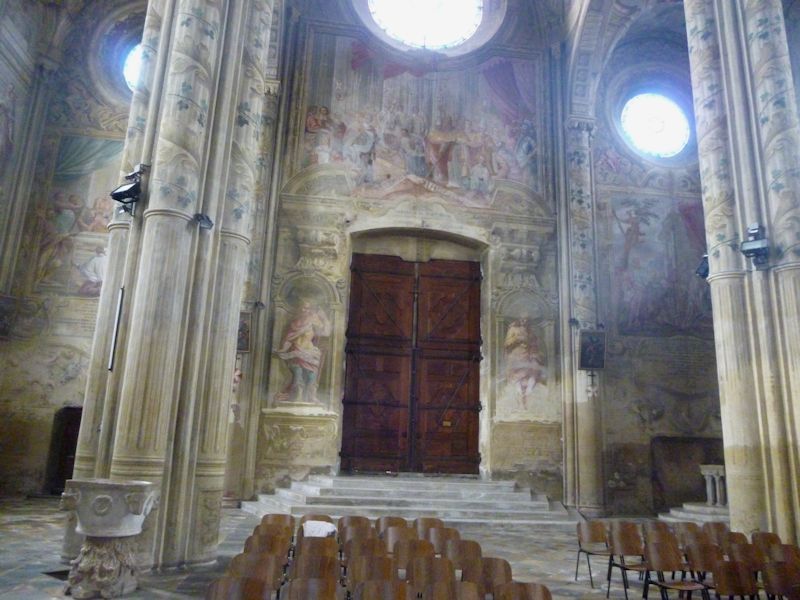
The front door, apparently not regularly used

Rose windows over the aisles as well as the nave

A mosaic on the history of Samson, from the 12th and 13th centuries, in the presbytery

We seem to have the place to ourselves. It's the off season.

The neglected façade of the cathedral, with three doors each with its own rose window (the two flanking portals were walled up in 1711 to allow the addition of huge new frescoes on the interior counter-façade).

There's no entrance from this side, so just [stop].

The north side of the cathedral

City streets. Throughout the 13th century, Astigiani fortunes were tossed about amongst the chaotic military politics of the rest of northern Italy, including wars with its neighbors Alba and Alessandria, the Savoie and Milanese imperialists, the brutal squabbles amongst Guelph and Ghibelline factions, Emperor Frederick II "Stupor Mundi" and his attempts to pacify the north of the peninsula under the Holy Roman Empire, and Ligurian resistance to Charles of Anjou and his Neapolitan dreams of another empire.

The Torre Troyana clock tower (from 1260-1280). For complicated reasons, and with pauses for overlordship by Monferrato and by the Visconti and Sforzas of Milan, Asti remained under the authority of the Valois of France, until in the 16th century somebody gave it to the German emperor, who then gave it to Naples. It fetched up as one of the most important military possessions of the Savoyards after 1575, but then -- Asti was bedeviled by more ping-pong between Savoy and France, until Napoleon paid a visit in 1805 and declared it to be a second-class city in his new kingdom of Italy.

Once rid of the Little Emperor in 1814, Asti rejoined Piedmont and thus followed along into the New Italy in 1861. And has prospered, obviously, and won our hearts with Barbera d'Asti, Grignolino d'Asti, and Friesa. Amongst others.
Back now, for dinner, to Lu!

The next day, rain all over the Piedmont and Liguria, and we've been told that the Genoa road has been flooded out (which was true) . . .

So if we can get through the flooded country roads to the autostrada at Alessandria, we'll go the long way round via Piacenza, Parma, and over the mountains to La Spezia.
       
     

PS: Asti is twinned with, amongst others, Miami, Florida, USA, and Henan, Nanyang, PR China.
 Feedback
and suggestions are welcome if positive, resented if negative, Feedback
and suggestions are welcome if positive, resented if negative,  .
All rights reserved, all wrongs avenged. Posted 6 December 2014. .
All rights reserved, all wrongs avenged. Posted 6 December 2014.
|
 Dwight Peck's personal website
Dwight Peck's personal website


































































